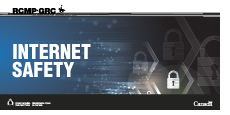Cyberstalking
Protecting yourself on the Internet should begin by trying to keep any information about yourself confidential. You should avoid giving out more information than necessary, and never tell someone highly personal information, including:
- The full name(s) of you and/or your children
- Your home address
- The name and address of the company where you work
- The school that you or your children study at
- Your phone number (for home or work)
Be aware that while you’re being honest about yourself, others you communicating with over the Internet may not be telling the truth about themselves. This deception is done to make the victim feel at ease. By making you feel that the two of you have things in common, there is a greater chance that you’ll be willing to exchange photos and/or information.
If you don’t wish to receive electronic messages from someone, then send the person a message saying that you don’t wish them to send any additional messages or contact you in any way. This will let the person know that you didn’t appreciate their behaviour, and give them the chance to stop. Often this is enough, but if you continue receiving harassing messages or threats from them, then don’t reply to them. Consider contacting the police.
If you receive any messages that make you uncomfortable, (through email, chat, etc.), but don’t feel threatened or the need to call the police, it is possible to block that person from sending you any other messages. Many apps allow you to filter messages or add certain people to an ignore list, blocking them from contacting you.

The Niagara Regional Police Service provides numerous external resources on online safety:niagarapolice.ca/onlinesafety.
The RCMP's has helpful information on:
•Bullying and cyberbullying
•General internet safety
•Child exploitation
•Online scams/frauds
•Protecting your information online

